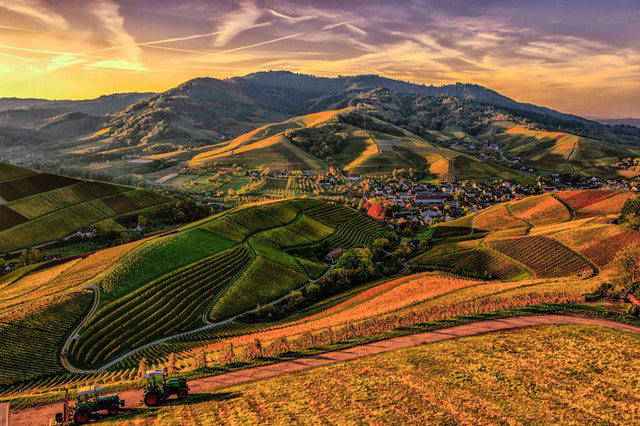The concept of the Green Belt was first introduced in London in 1938 – before the Town and Country Planning Act came into effect. The policy was developed to contain urban sprawl caused by post-war housing developments.
However, The Organisation for Economic Co-operation and Development (OECD), found that the UKs responsiveness of housing supply to demand was the weakest among developed countries – largely due to green belt policies.
In fact, since 1979, the green belt has doubled to cover 13% of land in England, compared to 2.3% covered by buildings.
The green belt is an effective policy and does its job in containing urban sprawl – but at what cost?
The cost of green belt
A lack of developable land means less homes with higher price tags. It’s a contentious issue, but we believe that the answer is placing a ring around towns and cities – not a vast area of poor quality green belt land…land which could be viable for development.
Releasing plots of green belt land for low density builds would allow for road improvements, infrastructure, sustain the environment and give opportunity for affordable housing. It also prevents growth from being redistributed from urban areas to rural settings. And what cost is this to the environment when commuters are forced to travel into cities for work?
We hope that the Government understands the urgent need to free up green belt land – currently it remains a pressing point in UK politics and support is growing. Building on just 25% of green belt within the M25 could help solve the housing crisis.
How does this affect you?
Getting planning permission for green belt land can be challenging, but it is achievable. In 2020, planning applications for 35,000 homes on UK green belts were submitted. And over the past nine years, 24,000 were built on green belt land.
The National Planning Policy Framework defines inappropriate development as “harmful to the green belt” and should only be approved in special circumstances. So, careful planning permission to outweigh harm is key. This should include innovative and sustainable design, high standards of architecture and sensitivity to the local area.
Green belt new build in Cheltenham
SF Planning has helped clients enjoy planning permission success for many years, and were pleased to secure a particular new build dwelling outside the urban town of Cheltenham – and within green belt land. Despite enthusiastic objections from some parties, we were just as determined!
“Huge thanks again Becky for all your hard work and determination – we’re so grateful to you.” Our happy client.
You can read the full story here.
Secure green belt planning permission
Green belt projects require specialist help and SF Planning can guide you through your planning application.
Call us today on 01242 231575 or send us a message using our short contact us form.

